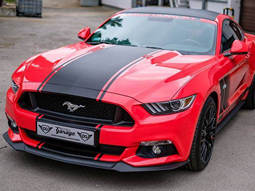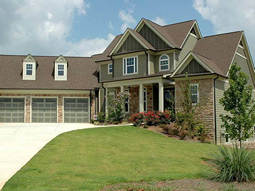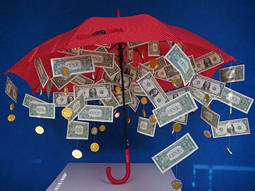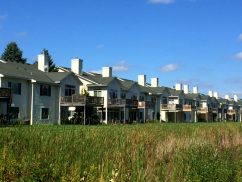
Understanding Different Types of Homeowners Insurance Forms & Types of Homeowners Insurance Coverage
Home insurance is basically to protect not just your personal properties, but also the building. Although no amount of money can replace memories you have shared, your family pictures, the matching plates, your grandfather’s favorite coffee table, or the energy and time you have invested decorating your house and turning it into a home. Home insurance is created to help you start all over from a fire, storm or theft. You do not need to start looking for funds to begin afresh.
There are different types of homeowners insurance available to you, and the homeowners’ insurance policies to choose from is called “forms”.
Homeowners Insurance Policies is divided into four categories
- Standalone Homes Insurance
- Policy Forms for Renters
- Insurance for Condo and Co-Ops Owners
- Other Policy Forms
1. Standalone Homes Insurance
The type of policy form you purchase depends on the kind of home you own and the level of protection you need. However, it is not all the homeowner insurance that covers every disaster or peril. Generally, before deciding the type of insurance you need, ensure you read and understand every detail of the policy before making a decision. Each category has their lists of insurance and Greg Ganyo Insurance Agency explains the different subcategories of the four types of homeowners insurance policies.
HO-1 insurance policy: this is a standard/basic policy with limited protection that covers the residence from a distinct list of eleven (11) types of damages. It includes windstorms or hail, fire or lightning, explosion, volcanic eruptions, theft, glass damage, vehicles, aircraft, civil and riots commotion, vandalism and malicious mischief, and smoke. The HO-1 will not cover any damages that are not listed in the policy, it will only cover those explicitly listed. The HO-1 policies sometimes will not include personal properties in the home. The HO-1 was the first standard home insurance, but it is no longer practiced in some states, and it is gradually dwindling in most other states.
HO-2 insurance policy: this policy includes a series of water-related damages to the items covered by Homeowner-1. This coverage is more comprehensive although it is more expensive. The HO-2 is a named peril policy, just like the HO-1 it is only the damages specifically listed are covered. The HO-2, unlike the HO-2, covers personal belongings in the home.
HO-3 insurance policy: is the most popular policy form. It has a broader range of coverage than any other type. It is an extended form of HO-2 or a single homeowner’s insurance policy form that covers up to sixteen 16 most general damages and almost every peril, except damages specifically excluded for instance flood, earthquake, mudslide, landslide, sinkholes and nuclear accident. The HO-3 policies only cover personal belongings in the home against the same perils covered by an HO-2 policy form.
For example, a fire broke out, and it destroys your residence with all your belongings inside. A standard HO-3 insurance policy will cover the building and your properties up to the limits defined in the policy. However, when your home and all of your possessions are destroyed by water damage from plumbing overflow or a falling object, an Homeowner-3 policy will be responsible for the building, and not your belongings.
HO-5 insurance policy: The HO-5 policy form is like the HO-3 but with a slight variation. The Homeowner-5 covers sixteen damages listed in HO-3 and also perils that are specially listed as an omission. Contrary to HO-3, the HO-5 covers personal belongings from a majority of the damages unless the item is specifically excluded. It is more comprehensive and expensive due to the level of coverage.
HO-8 insurance policy: This is primarily suited for antique home coverage. This type of coverage includes the coverage of HO-3 with additional assurance that replacement materials will meet the original building specifications. This policy is a highly costly process because older homes contain items that are not commonly used.
When there is a loss in the case, the compensation of the current cash value would be smaller than that of the replacement cost. The policy is quite affordable because of its lower benefit. Similar to the HO-1, the HO-8 only covers the eleven (11) general damages.
2. Policy Forms for Renters
HO-4 insurance policy: the HO-4 is commonly known as the renter’s insurance. It covers personal belongings in a rented apartment or home. In a case of the eleven (11) damages covered by the HO-1, the insurer or landlord’s insurance necessary compensation will cover only the rental structure, but will not include the tenant’s properties. Residents need an HO-4 policy form to cover personal property, as well as any part of the apartment they might own.
The Homeowner-4 policy also provides extra living expenses; peradventure the residence becomes uninhabitable due to a covered damage. Unlike other policy forms, the HO-4 does not always include liability protection; however, you can add to the policy for an additional cost. Liability coverage is an essential part of homeowners and renter’s insurance and covers the insured from likely tragic financial responsibilities.
3. The different types of Insurance for Condo and Co-Ops Owners
HO-6 insurance policy: the Homeowner-6 policy is also known as insurance for condo owners and co-op tenants. Every co-op or condo association has different homeowners insurance policies and levels of coverage. You have the right to review the insurance policy the insurer has in place before subscribing insurance for your unit as a condo or co-op tenant.
Condos vs. Co-op
Condos are treated as a single home when it comes to homeowners insurance since the policyholder owns his or her unit. An HO-6 policy is needed to protect part of the building they own, their belongings inside, liability and extra living expenses should the unit become unlivable due to a covered damage. Frequently a condo association is responsible for common areas of the building, landscaping and the bare walls, floor, and ceiling only. This is where An HO-6 policy becomes essential.
Protecting a co-op is entirely different from condos. Co-op tenants do not specifically own their unit; they own shares or a percentage of the building where the unit is located. Although co-op owners are considered residents, they need an HO-6 policy form instead of renter’s insurance because of their share in ownership.
4. Other Policy Forms
Homeowners Association Insurance (HOA): This insurance policy form covers the joint ownership of complexes where one or several buildings have tenants that own their unit. Because every homeowner’s association needs are unique, the HOA policies vary. All of them have some combination of business property insurance coverage against perils; liability coverage for accidents, mistakes and injuries on joint ownership; and business crime insurance in a situation of robbery, board member dishonesty or vandalism.
Mobile Home Policy (MHP): The Mobile Home Policy form covers mobile homes and any accessories attached to them. The policy can cover the same 11 damages as an HO-1 or as many perils as the HO-3 forms detailed above. You can only implement Mobile home coverage while it is stationary, unlike RV policy.
Basic Dwelling Fire Policy DF-1: this is also known as fire and extended coverage policy that helps to protect your home if it does not meet the homeowner’s insurance policy forms detailed above. The Dwelling F-1 policy form usually covers Windstorm and hailstorm, explosion, fire and lightning, riot or civil commotion, vehicles, aircraft, and smoke. This policy only covers damages that are specified in the form. Not all insurance companies sell a Basic dwelling fire policy form.DF-1 policy form that offers a limited coverage compared to any other type of insurance.



















